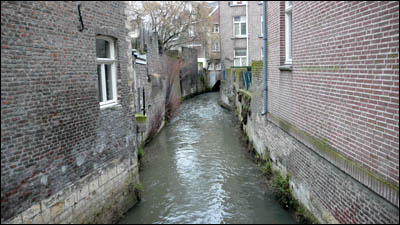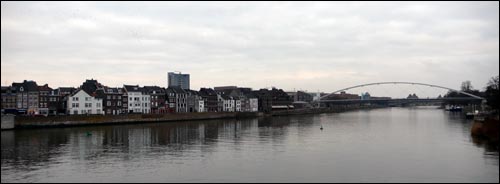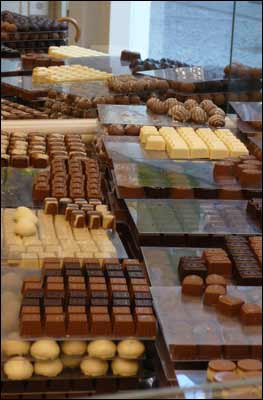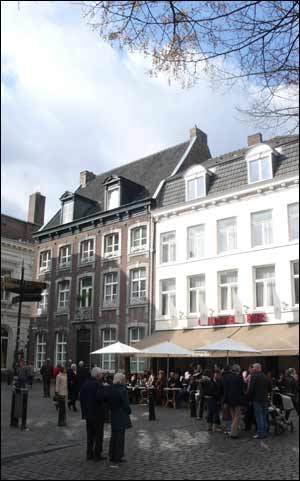And if you want to check out here book, here's where to get it:
http://ebooks.carinapress.com/86260A16-243A-49E5-849F-0E5A0D842BFB/10/134/en/ContentDetails.htm?ID={61D50A99-24CC-4154-9330-794A12CD98D9}
http://ebooks.carinapress.com/86260A16-243A-49E5-849F-0E5A0D842BFB/10/134/en/ContentDetails.htm?ID={61D50A99-24CC-4154-9330-794A12CD98D9}
Susanna's website.
http://www.susannaives.com/ and http://susannaives.com/wordpress/The Skeleton Woman
I love the symbolism of water.
For a time during my childhood, I lived in my grandfather’s old, yellow, Victorian house nestled amid the pink and white lantana. A great curiosity to my young mind was the well just outside our back screen door. I don’t know the history of the well; perhaps it was dug when the old house had only two rooms. By the time I came along, a protective concrete slab covered the opening. A hole, about three inches in diameter, had been cut into the concrete. I would throw limestone rocks down the hole and waited for them to splash the water deep, deep below.
Now I as write from Maastricht, Netherlands, the Jeker River winds like a grapevine through the old stone buildings and stone fortifications, eventually disappearing under the city into the network of dark silent channels leading to the Maas River.

When Delle asked me frame to my journey to the Netherlands in terms of the hero’s journey, I immediately thought of Joseph Campbell’s work. Yet, most of Campbell’s heroes sojourn into the unknown. In my case, my journey was a return. A rebirth. My imagination kept circling back to the hero from a folktale entitled the “Skeleton Woman” recounted in Women Who Run with the Wolves by Clarissa Pinkola Estes. It’s a myth of a fisherman hero, who finds a horrifying treasure under the waters, and a heroine reborn. So, I have adapted the tale and reset it in Maastricht. Hopefully, you will enjoy it, but be aware — it is a little weird (or “freaky” as my husband describes it). After all, we’re is the realm of myth and folklore, so one learns to expect swan princesses in the sky and tiny mermaids under the water.
…………………….

A long time ago—no one remembers exactly when—a woman was thrown into the Maas River and drowned. She drifted to the river’s bottom, and over time, the fish nibbled her flesh away until she was just a skeleton. You may know this woman—day after day spent grocery shopping, folding laundry, scanning the lines of a spreadsheet, sitting before her computer pushing pixels about a screen—until one day she became this hollowed out skeleton, just as sure as the fish ate her skin. All her creativity nibbled away in everyday living. For years, she drifted about the river’s floor, a forgotten, tangled skeleton amid hundreds of years of refuse: Roman beads, medieval vessels, the rusted remains of shrapnel.
Now comes our Dutch hero, a mere fisherman, dipping his pole into the Maas for gifts from below. Food to appease his hunger. In Jungian terms, he is playing with some powerful stuff on his small boat afloat on the water, poking the surface of the subconscious. How often the romance novel begins with the hero who thinks he is perfectly content in his small, controlled world. Such heroes should know better than to fish!
Of course, his fishing line catches onto the ribs of the old skeleton. Our fisherman, thinking he has gotten something big—the mighty Hemingway of fish—excitedly reels his catch in. From the water rises an old, hideous skeleton, decorated with slimy weeds, old bicycle parts, beer bottles, and other urban debris.
He cries out, horrified at the atrocity hanging from his line. He drops his pole and slams down the boat’s throttle, desperate to flee all he has seen. But the fishing line is caught on his person, so the poor skeleton rides behind, bouncing in the rough water of the speeding boat’s wake. The fisherman drives his boat to the shore, leaps onto land, and runs away.

But the skeleton, still connected to him, is dragged along. Her bones rattle on the old cobblestone. It has been so long since she has been above water. She has forgotten the dense air scented with rain, faint diesel fumes, and flowers. Or the narrow streets lined with ateliers selling modern paintings with lush, vivid colors and flowing lines.
By the Turkish grocer, her skeleton hand reaches out and grabs a handful of the salty, mild-tasting olives from Turkey. Oh, to taste something different than the foul, polluted river waters! Further down the street, a chocolatier has put out candied orange peels covered in bitter dark chocolate. Like a greedy thief, she takes a handful of these, too.

Now, she clings to the terrified fisherman, so afraid to be thrown in the sea again. Afraid her senses will again be dulled by years of drifting, floating about in darkness and silence.
The fisherman runs to his small flat above the restaurant where the tables have been scattered onto the small square. He scrambles upstairs, then slams his door shut, thinking he has outrun the monster. But down at his feet, her bones are wrapped tight about his ankles. He kicks the skeleton to the corner and begins to pace the room, his hand pressed to his mouth. She can hear his fearful heart beats echoing against the high, white plaster walls. Finally, he tosses up his hands, mutters a curse, and walks away.
The skeleton is alone.
From her dark eye sockets, she studies the room. Flowers spill over the edges of a glass vase set on the low table before the Danish-style flat leather sofa. Beyond the thick-glassed, arched windows, she can see the roofs and chimneys of Maastricht sprouting up at odd angles, like weeds fighting for the space in the sun. Above the narrow, dormant coal fireplace, a nude female dances on a canvass of swirling splatters of red and gold paint. The skeleton once had round, fat breasts and curving hips. Clad in silk, feathers, beads, and jewels, she had danced in the street during Carnival, swinging her hips in sensual swirling motions.

The fisherman clangs about in the kitchen. Soon the high whistle of steaming hot water fills the flat. He returns, sits down on a sofa, looks at the skeleton, and runs his hand through his hair. He is tall—the Dutch are the tallest people in the world—but his dark hair curls are brushed back from his face and fall about his shoulders like the Italian men. From his teacup, steam rises. She can smell the sweet Rooibos and vanilla. The skeleton is so thirsty; she could gulp down the tea in one swallow, but she dare not move.
The fisherman studies her sad, mangled bones heaped in the corner. A compassionate light warms his eyes, the fear receding. “You are just a poor skeleton,” he whispers. He sets down his cup, crawls on his knees to the skeleton. Slowly he untangles her old bones. His hands are large, but as precise as a painter’s. He hums as he pulls her legs from where they had become tangled about her shoulders, straightens her spine, and kindly sets her head upright.
When he is done, he opens the window and fills the room with the warm, summer breeze, rich with the staccato of Dutch conversation amongst friends, the lulling rolling sounds of Massnet’s Meditation, and the fragrance of wine and flowers. He sits on his sofa and begins to read. The skeleton watches the concentration of his eyes, the crinkle in his brow, and the unthinking motion of brushing his hair from his eyes. For hours she does nothing but watch; she wonders what words light up his mind, wishing they could fill her mind too.
A little before midnight, the fisherman falls asleep on his sofa, the book falling from his fingers. The skeleton crawls forward, careful not to let her bones clank. So thirsty. She sips the last of his tea, now cold to her growing lips. The aroma of African leaves and vanilla fills the small nose forming on her face.
She looks at his creased face, troubled in his dreams. A tear slides from his eye. Still so thirsty, she drinks the tear. It fills her skeletal frame like pitchers and pitchers of pure water.
The fisherman shivers in his sleep. She carefully touches his face with her bony hand, wanting to comfort him as he had comforted her. Warm skin blossoms like opening flower petals on her fingertips, down her hand, her arm, and over her body. She feels him quiver under her fingers. Was he cold? Were there other monsters in his dreams? She slides beside him and presses herself against him until she can feel his heart beating beneath her fat breasts. His arms circle her body as if by memory, knowing the sloping concave of her waist, the tender place between her shoulder blades. His eyes, still drowsy with sleep, open and gaze at her. She sees her face reflected on the gray surface of his eyes. She is smiling. He cups her chin in his hands and brings his mouth to hers. His warm breath fills her lungs, making her alive with art, words, world, being.



I've actually never heard of this folktale, but your telling of it is hauntingly beautiful. I think it's not so much creepy, as metaphorical. Beautiful. Your ability to evoke emotion in the reader is superb.
ReplyDeleteI agree, Catherine. Susanna tells it wonderfully, doesn't she?
ReplyDeleteI first read it in Women Who Run with Wolves, but I'd forgotten it. I did a little internet search and saw it pop up several times, but I don't recall the original source of the story.
It has a lovely language to it, doesn't it. I like the tiny details that don't simply describe a thing but create a bigger picture. Tastey words, I call them. Things like the "tender place between her shoulder blades."
ReplyDeleteAlso, the woman nibbled to death by pixels, (OK, that's not the story, but it's the sense of it's it, worn away by daily tedium) I think speaks to so many of our lives.
Very nice.
I know the Estes version of this tale, set on some bitter cold Arctic tundra. How evocative to see it set in such a rich and sensual environment.
ReplyDeleteI am especially delighted with the modern day comparison, its inherent warning and its solution to the malaise that is such a problem with our contemporary existence -- live, love, eat and drink your way whole.
It's both heartbreaking and heartwarming, sensual and haunting. I love where the characters blend in with the modern setting so seamlessly and comfortably. It's a classic.
ReplyDeleteI've never heard of this story, but I have to say that I really, really love your version. It was sad and beautiful and hopeful.
ReplyDeleteLovely use of sensory words. An old tale made into a modern parable.
ReplyDeleteWonderful tale! My inlaws are from Holland, but I've never heard this tale.
ReplyDeleteIt was good seeing you this weekend, Delle!